Beneath the Hawthorn Tree: Unveiling Irish Folk Practices and Superstitions
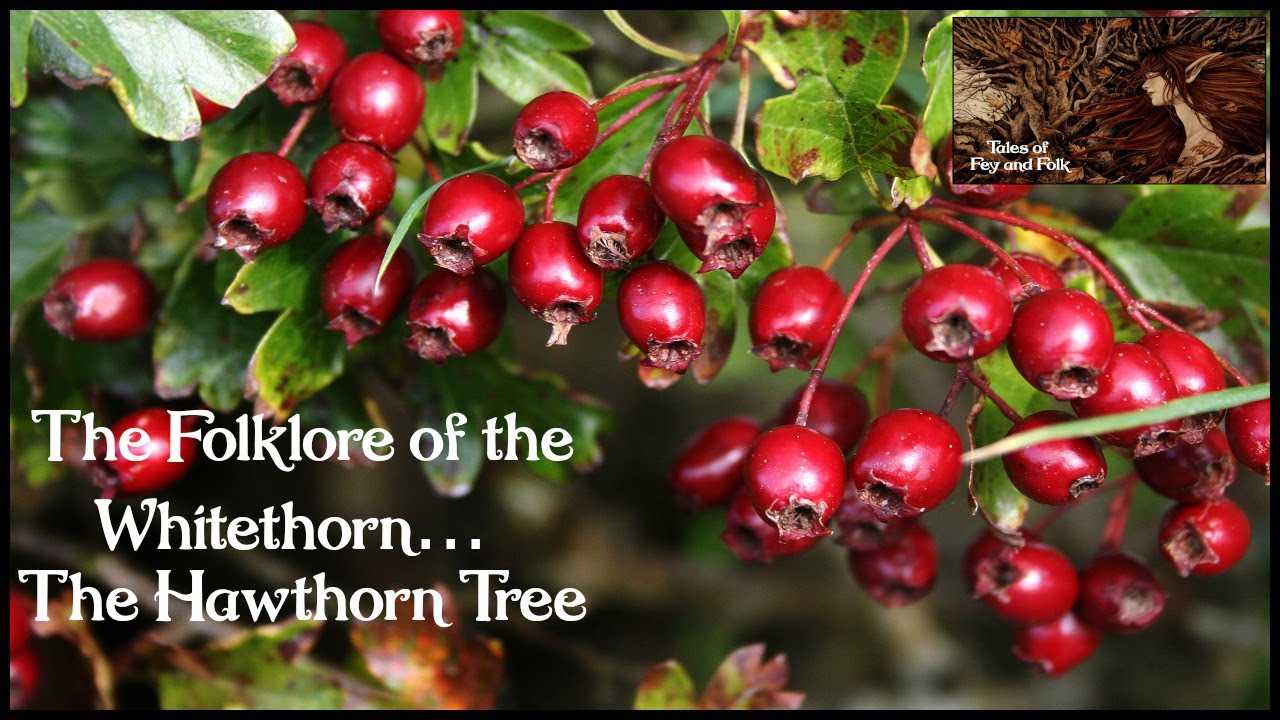
Updated On: April 23, 2024 by Eman Sameh
The hawthorn tree holds a special place in the tapestry of Irish culture, interwoven with a myriad of superstitions and folk practices that date back centuries. Throughout Ireland’s history, the hawthorn has been revered and feared in equal measure, symbolising both the heart of nature’s life force and a portal to the otherworld of fairies and spirits. As the seasons turn and the hawthorn blossoms, so too do the cycle of rituals and customs that surround this enigmatic tree.
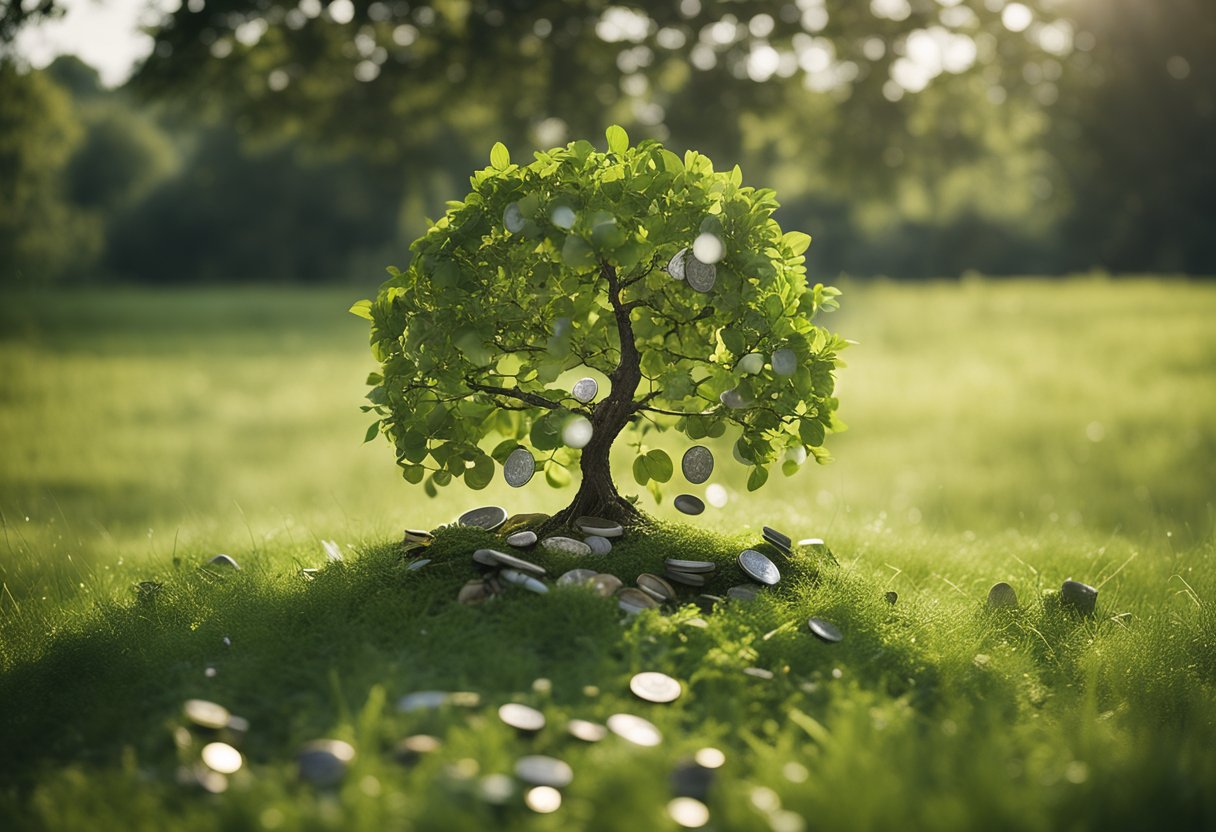
Acknowledging how deeply rooted these beliefs are in the Irish psyche is essential to understanding this tree’s significance. The rituals and customs practised beneath the hawthorn are nods to Ireland’s pagan past, juxtaposed with the layers of Christian influence that followed. Whether used in May Day celebrations, respected for its medicinal properties, or cautiously treated due to its supposed connections with the supernatural, the hawthorn tree is a central character in Ireland’s storied relationship with nature and folklore.
Historical Roots of Irish Superstitions
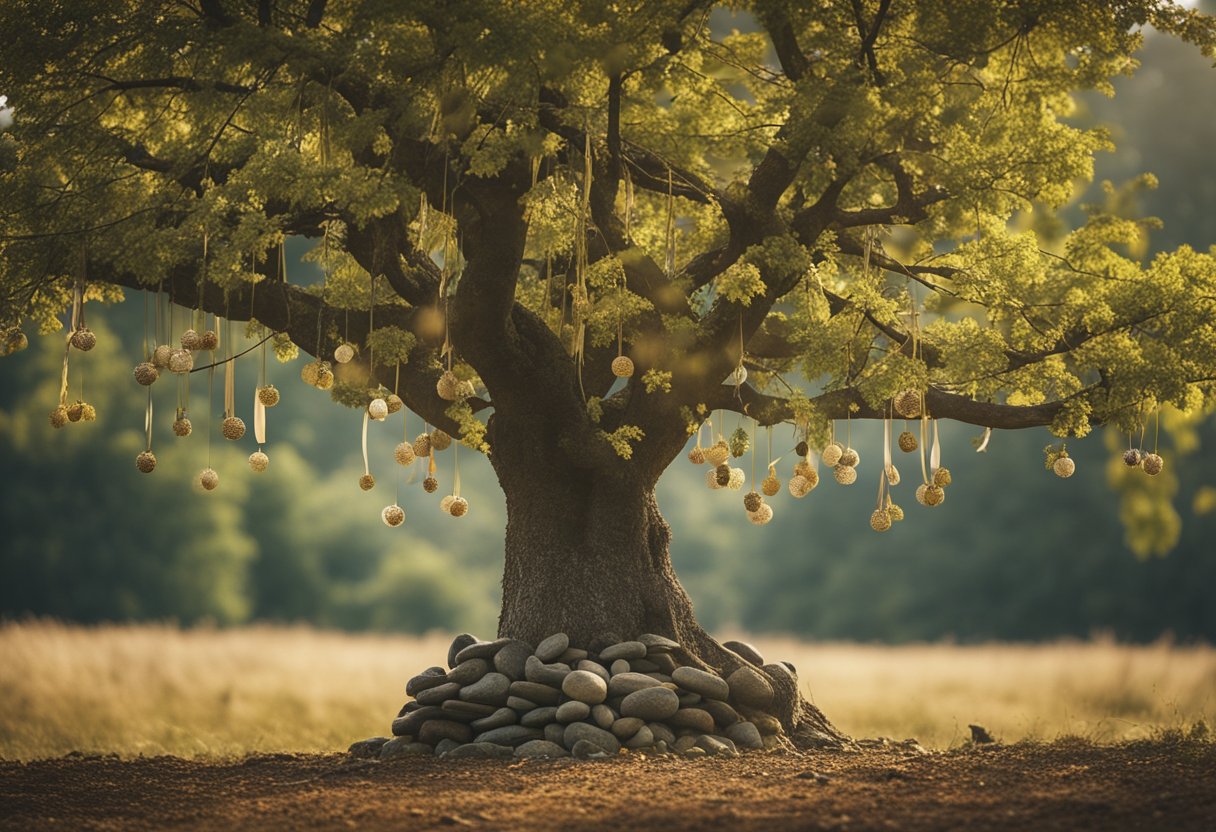
Before Christianity ever took root in Ireland, the land was lush with pagan beliefs and customs, which laid the historical foundations for many of the superstitions that are still part of Irish tradition.
From Paganism to Christianity
In ancient Ireland, pagan rituals and beliefs were essential to the everyday life of the Celtic peoples. They celebrated the natural world, worshipping deities representing various elements and forces of nature. Druids, the high priests of the Celtic society, held significant power, guiding spiritual practices and the interpretation of the Ogham alphabet – an early medieval script linked to the Irish language.
As Christianity spread, it did not do away with all pagan traditions. Instead, many were adapted or given a Christian reinterpretation. Seasonal festivals such as Samhain and Imbolc were transformed into All Saints’ Day (or All Hallows’ Eve) and St Brigid’s Day, respectively, weaving pagan customs into a new Christian fabric.
Significance of Celtic Folklore
The Celtic folklore that permeates Irish culture is often traced back to Neolithic times. Monuments like Newgrange, which predates the Egyptian pyramids, indicate a highly developed spiritual and ritualistic society. The significance of trees, particularly the hawthorn, is an enduring piece of this folklore. Considered sacred to both pagans and Christians, the hawthorn was associated with tradition and believed to be protected by the ‘little people’ or fairies, a belief that holds strong even today.
Our understanding of these ancient practices is shaped by the tales and myths passed down through generations. They tell of a time when the sacred groves were the centres of worship and rites, reinforcing how nature and spirituality were intertwined in the Irish psyche, bridging pagan beliefs and Christian symbolism in a unique cultural synthesis.
The Hawthorn Tree in Irish Culture
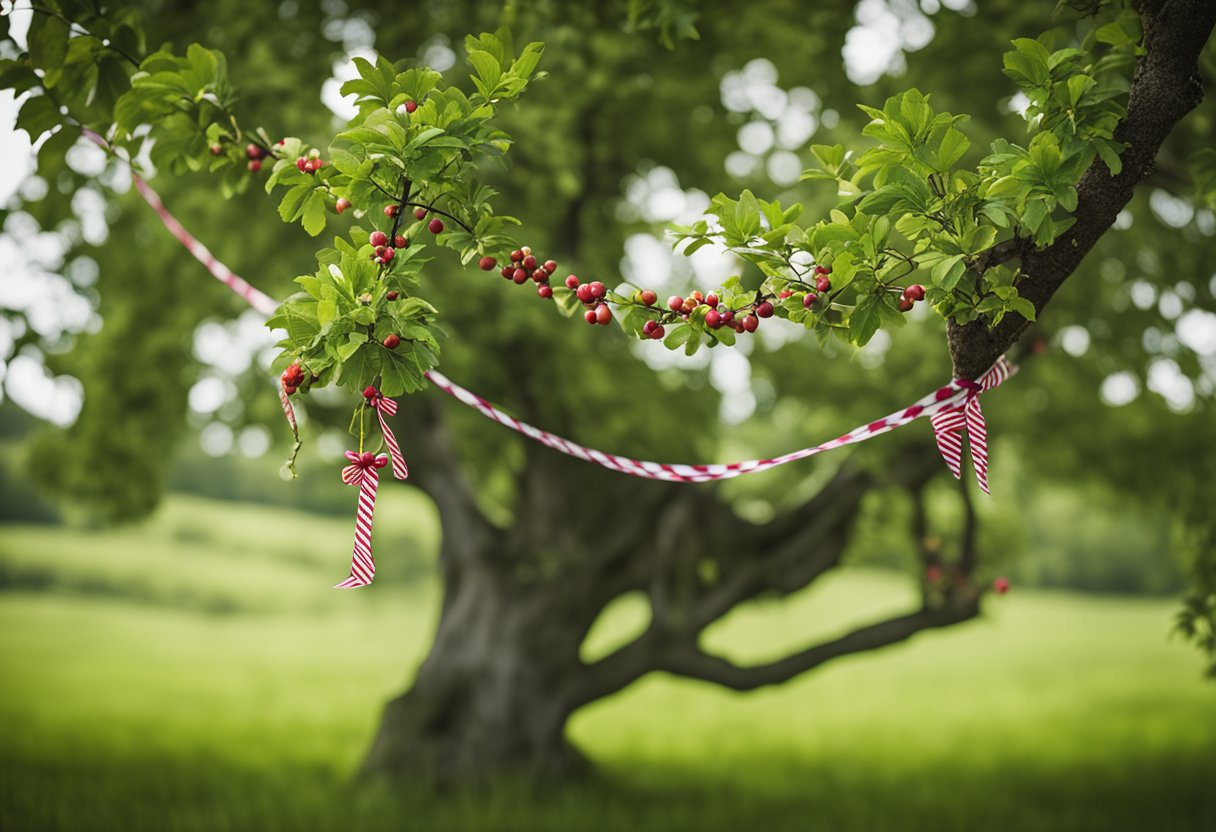
The hawthorn tree holds a profound place in Irish culture, embodying a nexus of sacred symbolism and enduring folklore. Its presence weaves through the fabric of Irish tradition, standing as a sentinel to the otherworldly and a marker of the sacred and supernatural.
Sacred Symbolism of the Hawthorn
The hawthorn is revered in Irish culture as a sacred tree. It is closely associated with the festival of Beltane, celebrated on 1 May, signalling the start of summer. This festival honours old Celtic folklore customs, with the flowering hawthorn central to rituals promising fertility and prosperity. The hawthorn’s blossoms symbolise life and hope, and its place in rural landscapes makes it an unmistakable feature within the sacred calendar.
Hawthorn in Mythology and Fairy Lore
In the depths of Irish folklore, the hawthorn is often referred to as a fairy tree. It is believed to be inhabited by the fairy folk, or the ‘Aos Sí‘, beings from the otherworld. These fairy trees are treated with respect and caution; damaging or removing a hawthorn is said to invite misfortune, reflecting a deep-seated belief in the protection of the sidhe (fairy mounds). The hawthorn, in Celtic folklore, acts as a portal between worlds where the fairy folk can interact with humans, and as a result, many customs have arisen to appease these powerful entities.
The Role of Superstitions and Rituals
In the tapestry of Irish tradition, superstitions and rituals play a crucial role in shaping community attitudes and practices. These beliefs are often entwined with the desire for protection, good fortune, and a respectful coexistence with the supernatural elements of the land.
Protection and Good Fortune Practices
Superstitions surrounding the hawthorn tree are deeply rooted in Irish culture, with many customs aiming to harness luck and protection. Placing offerings at a hawthorn, such as coins or strips of cloth, embodies the hope for blessings or healing. It’s a practice borne from a blend of respect and fear, as tampering with these trees, especially those standing alone in a field, is said to incur the wrath of the fairies believed to dwell within.
- Crossroad Dancing: This ritual was a means to honour the fairy folk and ensure fertility for the land.
- May Bush: Erecting a decorated bush outside homes during May was meant to invite good fortune and ward off evil.
Farmers’ Beliefs and Customs
Farmers’ beliefs and customs are steeped in rituals, particularly concerning fertility and the prosperity of their lands. There’s a strong emphasis on respecting the fairy path, unseen trails used by fairy folk, where interference is said to bring misfortune.
- Livestock Protection: Farmers would often tie red ribbons to cattle as a form of protection against supernatural harm.
- Harvest Superstitions: Specific rituals were adhered to, such as leaving the last sheaf of the harvest in the field to appease nature’s spirits.
Through these actions, farmers expressed their hopes for a successful yield, demonstrating the fusion of hard work with a deep-seated acknowledgement of the more mystical aspects of their environment.
Nature’s Bounty: Hawthorn’s Medicinal Uses
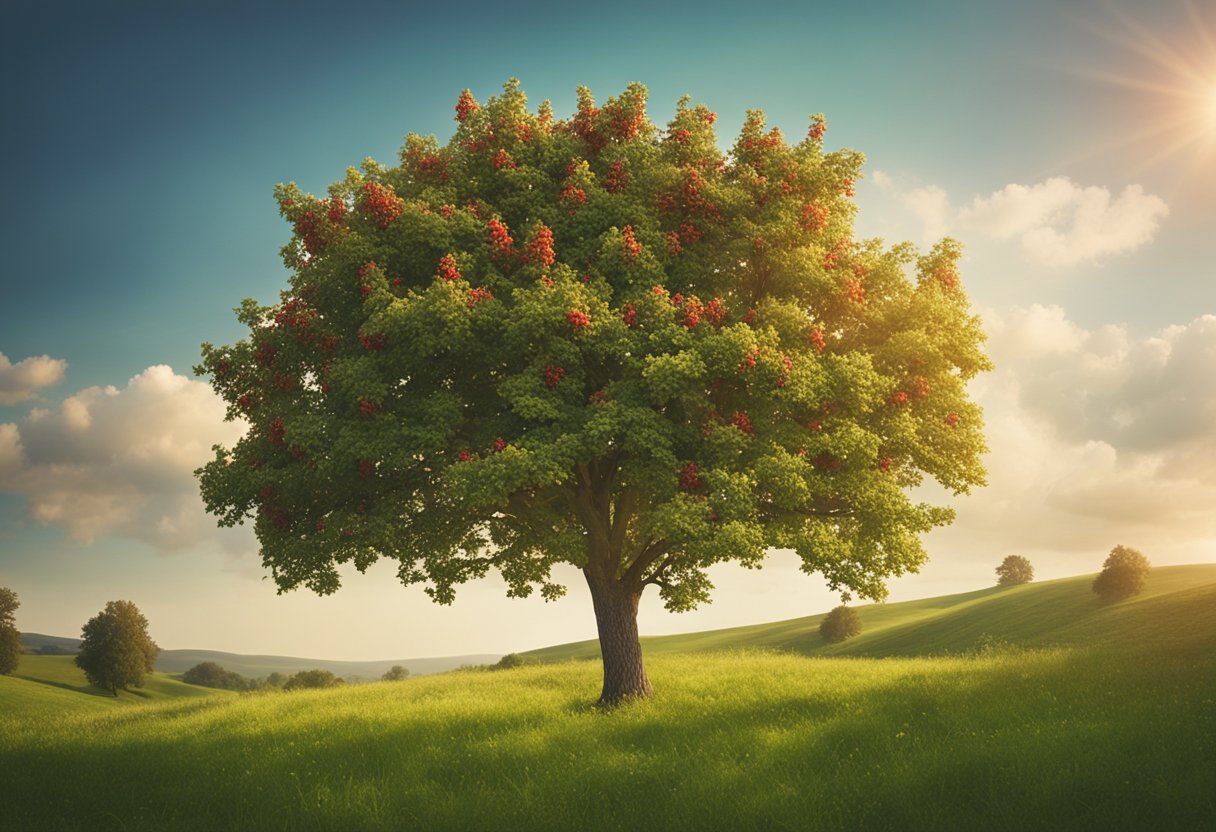
We find Hawthorn to be an exemplary herb that stands at the crossroads of modern and traditional medicine, offering a range of benefits for heart health and circulation.
Modern and Traditional Medicine
Hawthorn has been celebrated in folk medicine and is now recognised for its medicinal properties. In traditional practices, it was used as a sedative to ease anxiety and help with insomnia.
Heart and Circulation: Hawthorn is widely acknowledged for its role in enhancing heart health. Its biochemical makeup allows it to act as a cardiotonic, improving the functioning of the heart and circulatory system.
- Angina: Often used to relieve symptoms of angina, a condition marked by severe chest pain due to inadequate blood flow to the heart.
- Blood Pressure: Research and user experience point toward Hawthorn’s ability to help regulate blood pressure, aiding hypertension and hypotension.
- Sedative Properties: Beyond its cardiac benefits, Hawthorn can function as a gentle sedative, reducing symptoms of anxiety and aiding sleep.
- Diuretic Abilities: As a natural diuretic, Hawthorn promotes the excretion of salt and water, which can support the circulatory system by lessening fluid retention.
In contemporary health applications, Hawthorn extracts are formulated into dietary supplements and functional foods to capitalise on these benefits. This versatile plant’s nutritional profile is rich, containing amino acids, minerals, and vitamins, which together confer a high therapeutic value.
We respect the depth of knowledge encased in these traditional uses and are encouraged by the validation offered through clinical research. Hawthorn stands as a testament to nature’s intricate design, its therapeutic prowess entwined with our heritage, and its continuing support of our well-being.
Cultural Significance of May
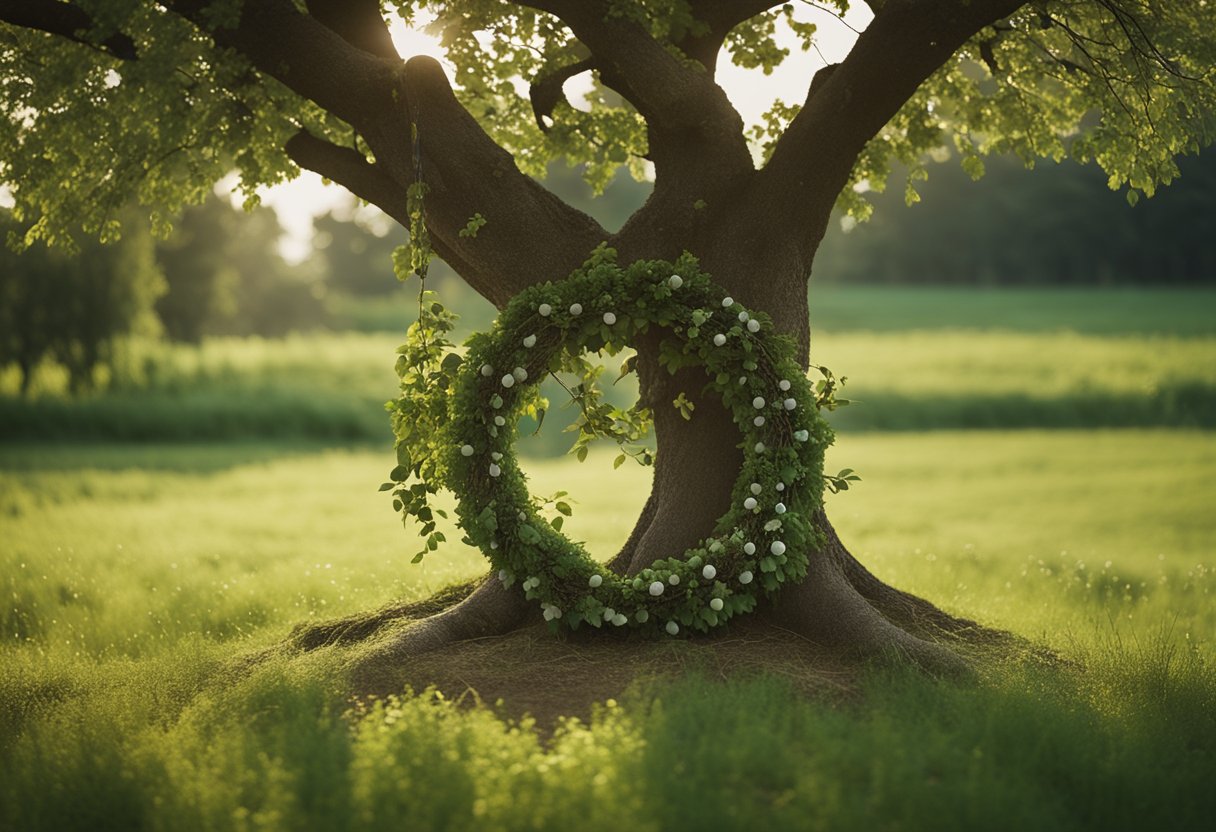
May is a month rich with cultural significance, encapsulating themes of rebirth, fertility, and the transition from spring to summer. As we turn the pages of the calendar, the observance of ancient customs and the blossoming of new leaves whisper to us of winter’s departure and the warm embrace of the coming months.
Celebrating Beltane and May Day
Beltane, an ancient Celtic festival marking the beginning of summer, is traditionally celebrated on the first of May. This auspicious time is enveloped in practices threaded with good luck and fertility, as it’s a moment when the earth is ripe with potential. Bonfires, a central element of Beltane, symbolise the sun’s return with all its life-giving properties.
May Day festivities often intertwine with Beltane rituals, especially in the erection of the May Bush, adorned with bright ribbons and painted eggshells to capture the essence of springtime rejuvenation. This bush serves as a focal point for community gatherings, a place where love may blossom as readily as the flowers bedecking its branches.
In our traditions, we tread the line between festive joy and ancient superstition. It’s believed that May, during a time of celebration, also holds a risk of bad luck—particularly in washing clothes or engaging in tasks better left to other months of the year. This reverence for the customs of old underlines the cultural weight that May carries, as every act and tradition is rich with meaning, rooted in a time when the annual cycles of the earth drove the patterns of our existence.
Folk Practices: Offerings and Rituals
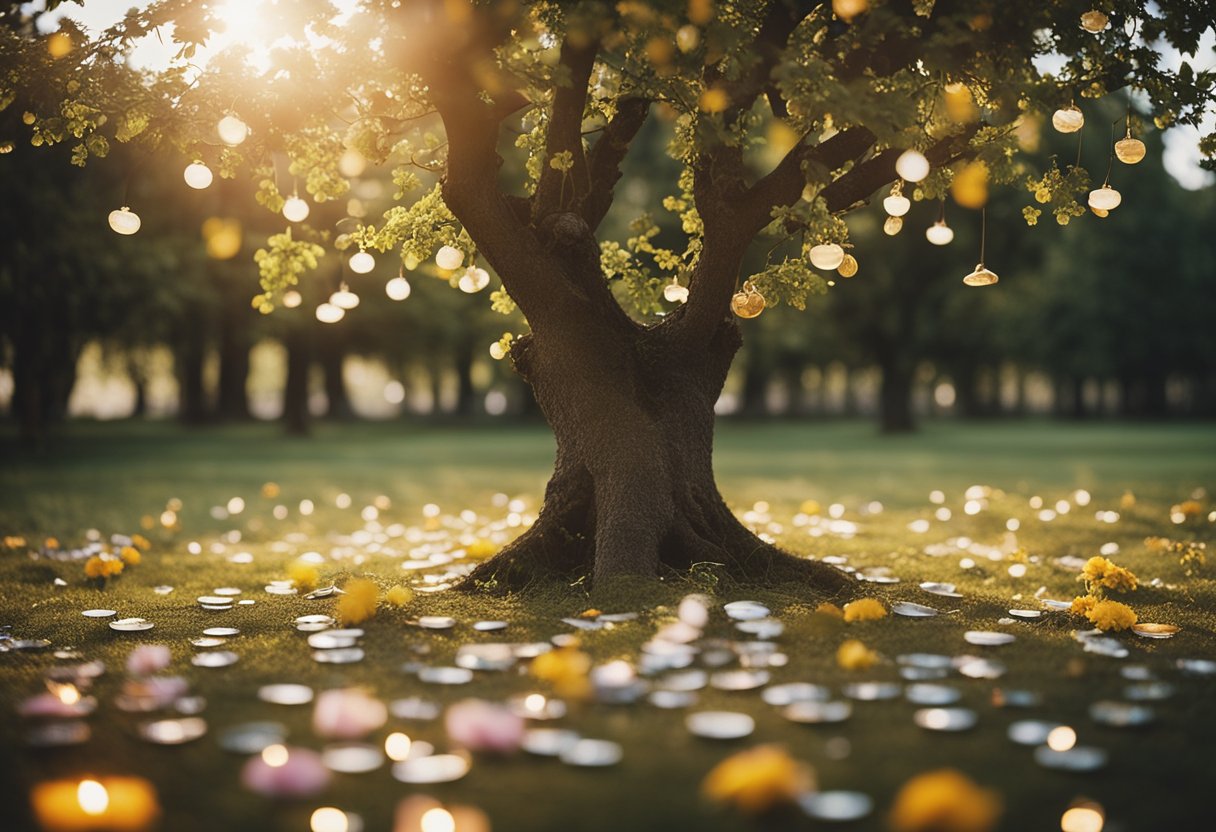
In our exploration of folk practices throughout Ireland, we’ve found that offerings and rituals form a vivid tapestry of tradition, deeply interwoven with the natural and spiritual world.
Holy Wells and Sacred Trees
Holy Wells: Throughout Ireland, we come across numerous holy wells, revered since ancient times. Often associated with saints, these wells are considered to hold healing properties. Offerings, typically in the form of coins or small tokens, are left by visitors seeking blessings, cures for ailments, or expressions of gratitude. It’s a practice rooted in the fusion of ancient beliefs with Christian traditions. For example, at St. Brigid’s holy well, people have been known to leave offerings along with their petitions for love and fertility.
- Common Offerings include
- Coins
- Religious medallions
- Cloth pieces
- Personal mementos
- Reasons for leaving offerings
- Requests for healing
- Prayers for personal issues
- Acts of penance or devotion
Sacred Trees: The rag tree, or wishing tree, often stands near a holy well. People tie pieces of cloth, or rags, to their branches while making a wish or prayer. These trees, frequently hawthorns, are thought to be inhabited by spirits or fairies and hold a special place in nature. Attaching a piece of one’s clothing is believed to maintain a connection between the individual and the spiritual realm, encapsulating hopes for health, prosperity, or protection over livestock. It’s not just cloth; sometimes bread and cheese are left as more substantial offerings to the supernatural guardians of the place.
The intertwining of Ireland’s nature and spirituality is profound, enveloping intimate acts of devotion with the lush landscapes of the island. As we immerse ourselves in these practices, we see a reflection of how past beliefs continue to colour and shape contemporary life, bridging generations through common threads of hope and reverence.
The Dark Side of Superstitions
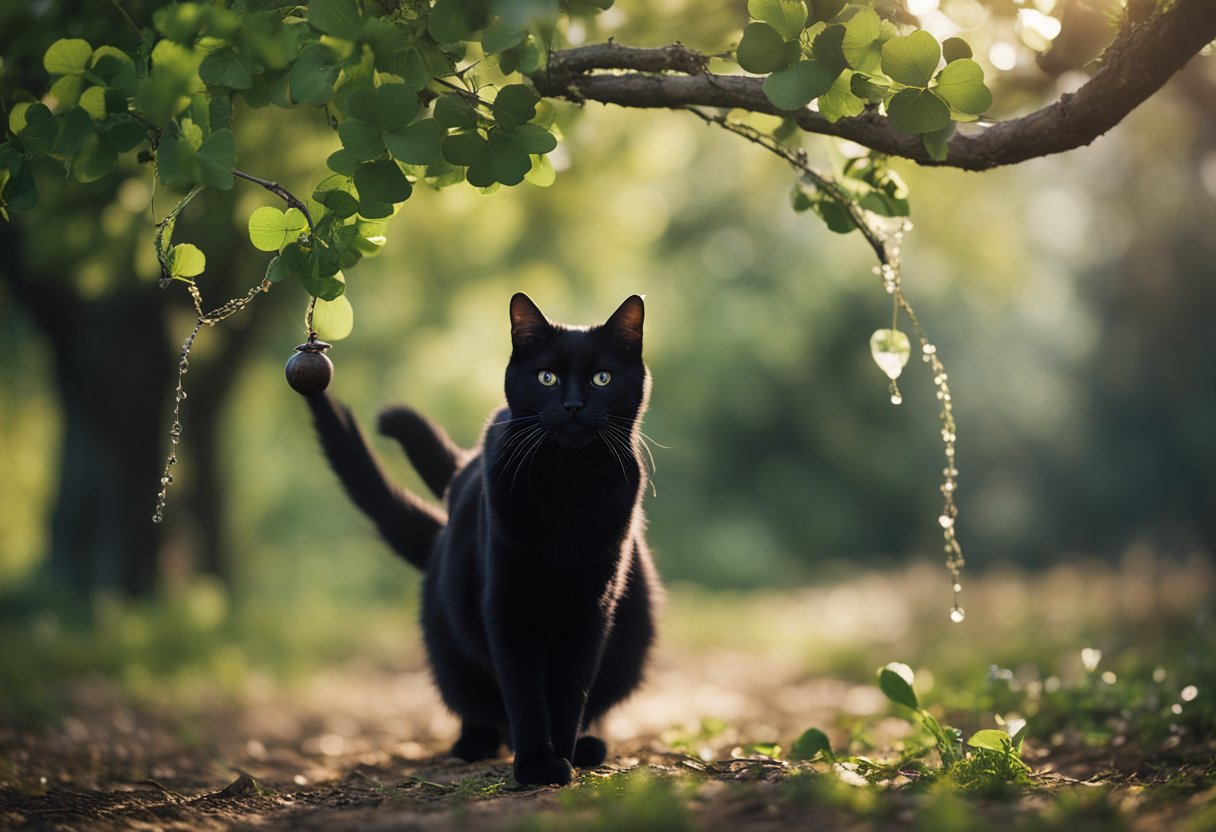
Before delving into the specific aspects of Irish superstitions, it is crucial to understand the powerful influence they hold in certain cultural contexts, particularly revolving around fear, respect, and traditions tied to nature.
Fear, Respect, and the Hawthorn
The hawthorn tree is a potent symbol within Irish folklore, often evoking a mix of fear and respect among those who hear its tales. To our ancestors, the hawthorn was more than mere flora; it was believed to be a fairy tree, a gateway to the otherworld of the fey. Farmers and rural dwellers treated these trees with utmost caution, fearing bad luck if they were to damage or remove a hawthorn. Legends recount that disturbing a fairy tree could lead to misfortunes, from soured milk to failed crops or even death.
These superstitions were not simply tales to while away the evenings; they were deeply ingrained beliefs that influenced day-to-day actions. For protection, it was common for people to leave offerings or perform rituals, respecting an unspoken pact with the unseen fey—a clear indication of the intertwining of fear and superstitions with practical living. The hawthorn’s blooms and distinctive shape lent it an otherworldly appearance, enhancing the belief in its connection to faery activity and the inherent dangers this held.
In this light, the hawthorn tree exemplifies the darker side of superstitions, where the natural world becomes a canvas for humankind’s deeper anxieties and the need for protection from the unknown. Our collective folklore reflects a history where the forces of nature were met with reverence and fear—a relationship that’s shaped our cultural landscape for generations.
Biodiversity and Ecosystems
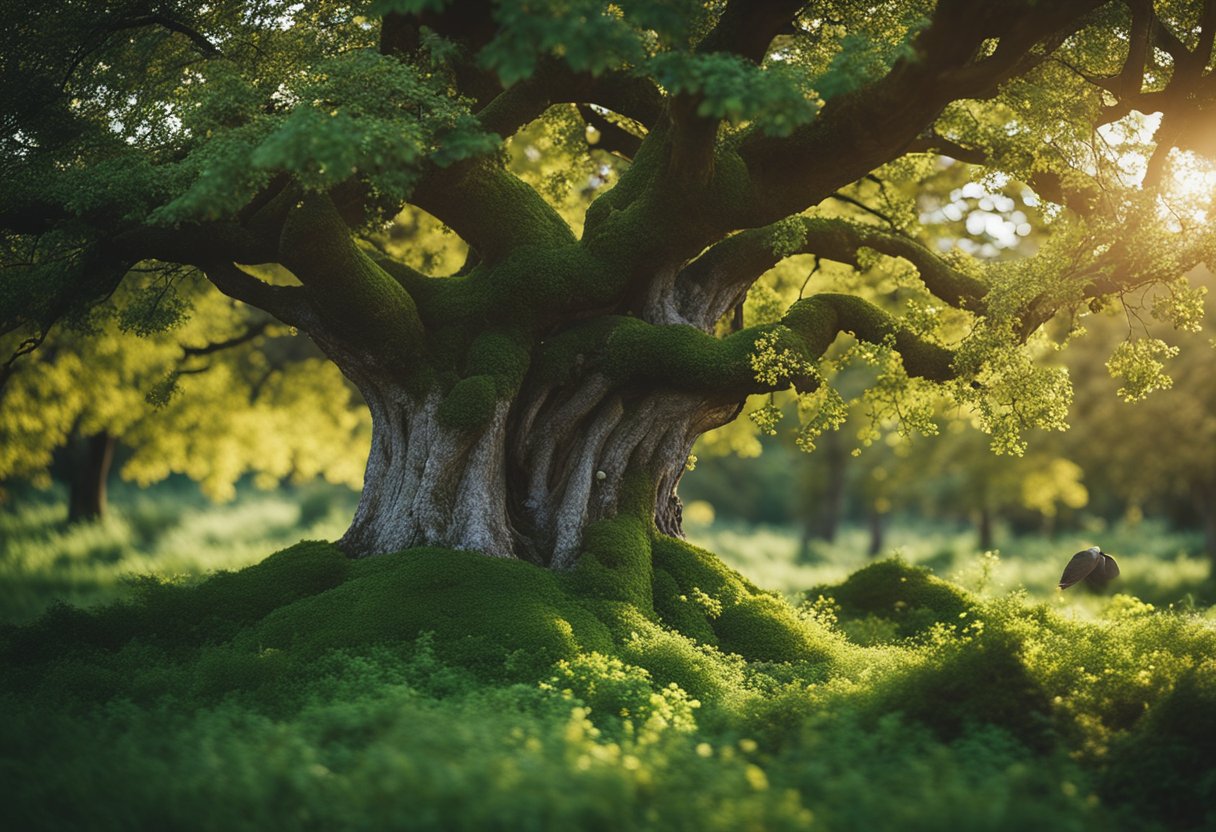
Our focus on the hawthorn tree allows us to explore its significant role within Irish nature, particularly concerning biodiversity and ecosystems.
Hawthorn’s Role in Irish Nature
The hawthorn, a small deciduous tree endemic to Ireland, is integral to rural and agricultural ecosystems. These trees serve as crucial hedging plants, providing both boundary demarcation and protection for crops from wind and soil erosion. The dense thorny foliage of hawthorn hedges offers ideal nesting sites for various species of birds and a habitat for numerous insects.
Not only do hawthorns support a vast array of fauna, they also contribute to the overall health of nature. Hawthorn flowers, which bloom in May, are particularly valuable for bees and other pollinating insects, making them central players in sustaining the surrounding plant life. In autumn, the trees bear red fruits known as ‘haws’ that are a food source for birds and small mammals, further underpinning the tree’s role in fostering a rich biodiversity.
With its varied uses and importance within the ecosystem, the hawthorn stands as a testament to the intricate web of life that thrives within Irish landscapes.
Notable Hawthorns in Ireland
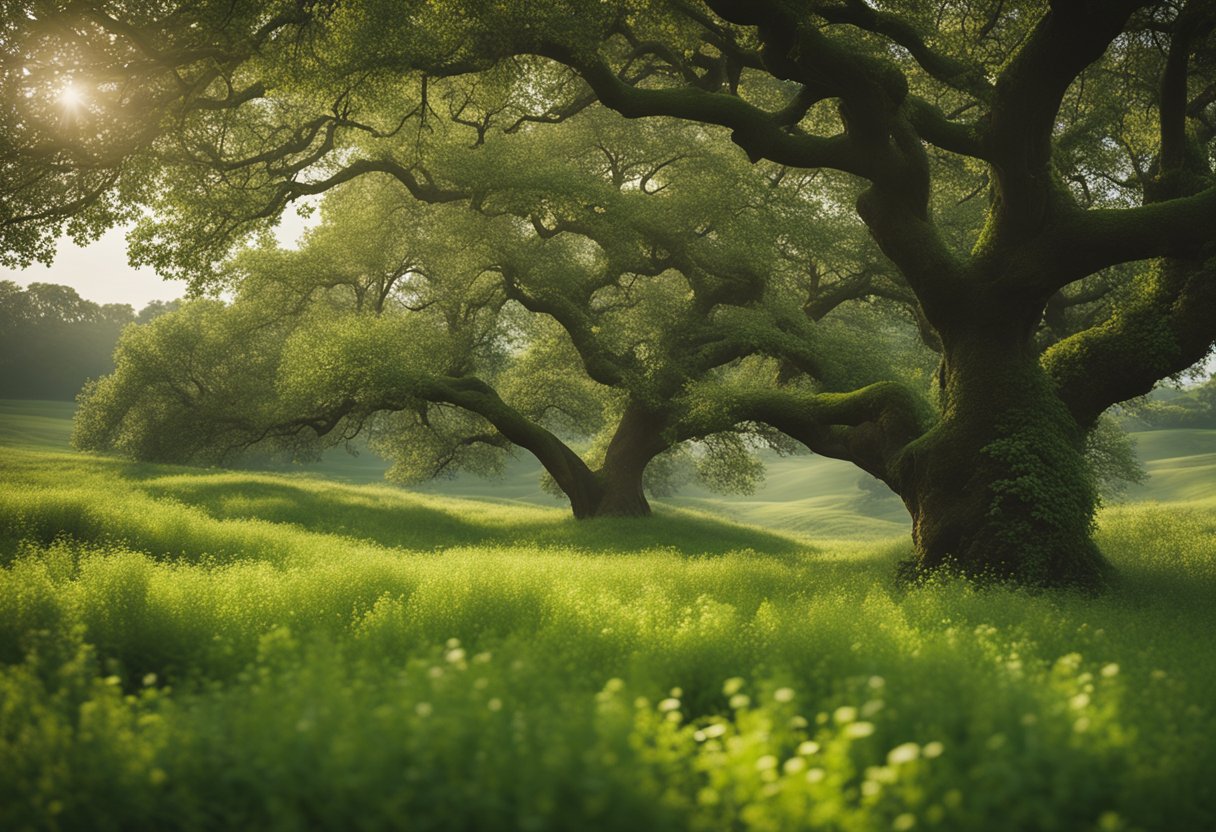
Ireland’s landscape is dotted with hawthorns, or ‘fairy trees’, steeped in lore and regarded with a mixture of reverence and superstition. These trees are often the centre of tales involving fairies, also known as faeries, and are known to stand near ancient stone circles or fairy forts.
Famous Locations and Stories
- County Clare: It is here that Eddie Lenihan, a famous Irish folklorist, campaigned to save a hawthorn bush from being destroyed to make way for a motorway. He argued that it was the abode of faeries and that damaging it would bring bad luck. His efforts highlighted the living belief in fairy folklore among some landowners and locals.
- Belfast: Near this city, in County Tyrone, stands a lone hawthorn tree, which is believed to be a fairy tree. Many locals respect these trees and are reticent to remove or damage them, in keeping with the traditions that pervade Irish superstitions.
- Crown of Thorns: While not a location, the association with the hawthorn having thorns has led to a symbolic connection with the crown of thorns in religious narratives. This adds a layer of sanctity and makes certain hawthorn trees especially notable.
- House Protection: Across Ireland, hawthorn trees are often found near homes as they are thought to offer protection. It was, and sometimes still is, a tradition to plant a hawthorn near a house to safeguard against negative forces.
Mythical Connections
As we explore the hawthorn tree’s place in Irish folklore, we uncover a tapestry woven with the supernatural. Our journey through these myths reveals the tree’s integral role in tales of the Sidhe and entrances to the Otherworld.
Legends of the Sidhe and Otherworld
In Celtic mythology, the hawthorn tree stands as a gateway between our world and the Otherworld. It’s said that where a hawthorn grows, one might find an entrance to the magical realms of the Sidhe, the fairy folk who dwell within. These are not the whimsical fairies of children’s tales but rather powerful beings, respected and often feared in Irish tradition.
The tree has been linked with fairy paths, invisible lines that traverse the countryside, remaining hidden except to those with second sight. Disturbing these paths, particularly by cutting down a hawthorn tree, was considered to invite misfortune, as it was an affront to the fairy folk.
Fairy forts, usually ancient earthen rings, often feature a hawthorn tree, further cementing its role as a sentinel between the worlds. The hawthorn is associated inherently with the realm of the Sidhe, integral to ceremonies and regarded as a symbol of deep spiritual significance.
These mythical connections are grounded in respect for nature and an acknowledgement of a world just beyond ours. Such tales have been passed down through generations, reminding us of the Celtic reverence for the mystical and the unseen forces that were once believed to govern the land.
Contemporary Relevance and Future Outlook
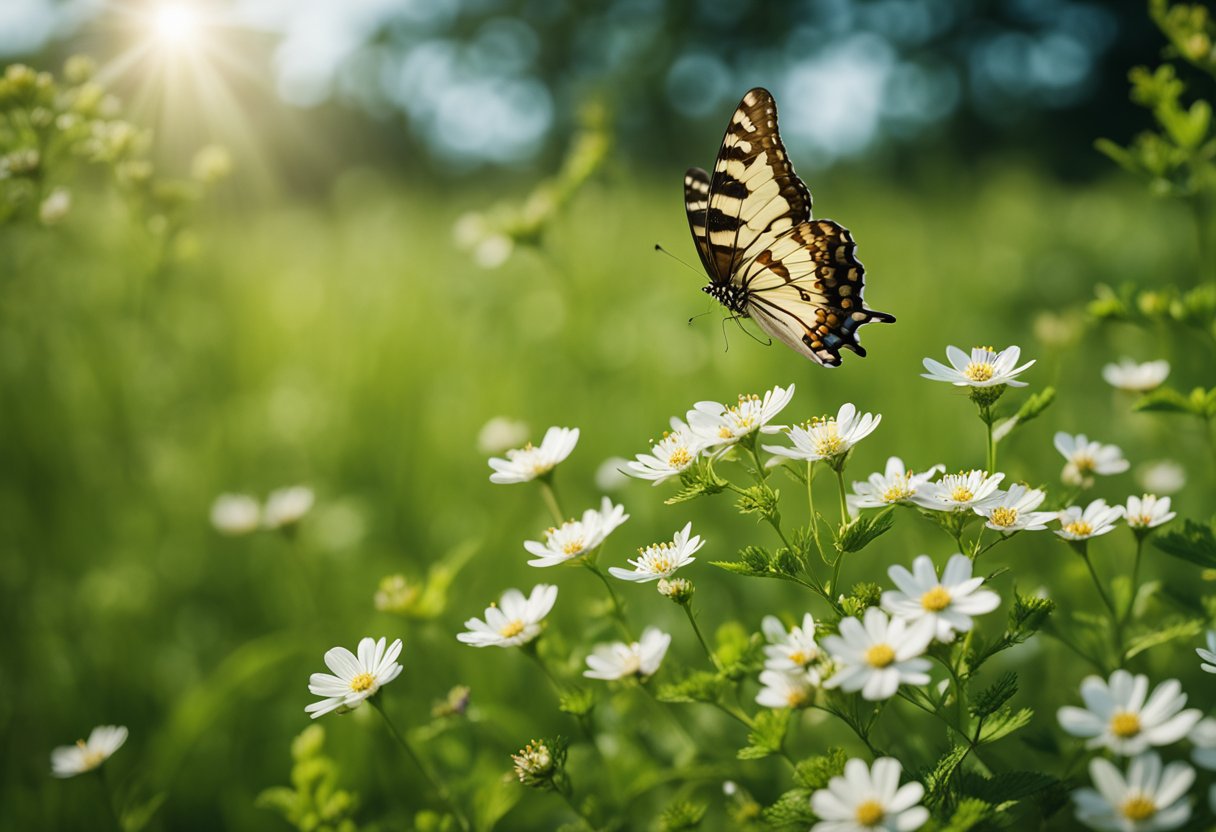
In our exploration of the hawthorn tree’s significance, we recognise that its contemporary relevance hinges on both cultural and environmental considerations. These ancient symbols of folklore are more than mere vestiges of the past; they remain beacons of heritage with implications for the future.
Conservation and Cultural Preservation
As we venture forth, it’s essential to understand that these trees are not only biologically important but also serve as a gateway to our cultural identity. The hawthorn tree, often regarded as sacred, continues to be a focus of conservation efforts. This is not just about preserving a species but also about safeguarding a living tapestry of stories and traditions that connect generations.
Notable conservation efforts include successfully rerouting a proposed motorway in Ireland and respecting a hawthorn believed to be a fairy tree. Stories like these, popularised by folklorists such as Eddie Lenihan, serve as reminders of the deep connection between our culture and the natural world.
It’s paramount that we maintain cultural landmarks, like the trees under which the Milesians are said to have battled the ancient inhabitants of Ireland. Our heritage is rooted in such tales and is given a global platform through efforts like those seen on BBC documentaries, further promoting awareness and reverence for these natural and cultural treasures.
In our homes, both literal and figurative, these trees stand as monuments to our folklore. They are more than just parts of the landscape; they are the houses of our shared stories and beliefs.
Our mission aligns with initiatives such as Connolly Cove, which seeks to preserve the uniqueness and integrity of local tales and traditions while presenting them to a wider audience. By highlighting and upholding the cultural significance of the hawthorn and its ilk, including the ash tree, we contribute to a global understanding of how these natural wonders shape our cultural heritage.
By investing in the future of our environment and cultural legacy, we ensure that these symbols continue to imbue a sense of wonder and identity for years to come.
Frequently Asked Questions
We’ve compiled some of the most common queries regarding the hawthorn tree’s place in Irish folklore and traditions. These questions touch upon the cultural and mystical importance of this notable tree within Irish heritage.
What significance does the hawthorn tree hold in Irish folklore?
The hawthorn tree is deeply entrenched in Irish folklore as a symbol of mysticism and is often associated with the spirit world. It’s especially linked to the festival of Bealtaine, celebrated on 1 May, which marks the start of summer in the traditional Irish calendar.
Can you explain the role of the hawthorn tree in Irish superstitions?
In Irish superstitions, the hawthorn tree is considered to be protective yet also a harbinger of misfortune if disturbed. The superstitions suggest that one should not cut or damage the hawthorn, especially the solitary ones, as these are believed to be favoured by fairies and could bring bad luck.
How is the hawthorn tree related to fairy lore in Ireland?
Within the tapestry of Irish fairy lore, the hawthorn tree is a potential gateway to the otherworld of the fairies. It’s thought to be a sacred place where fairies congregate, and disturbing a hawthorn tree could result in fairy retribution.
In what ways is the hawthorn tree connected to Celtic symbolism?
The hawthorn tree bears a strong connection to Celtic symbolism, where it represents fertility and growth, as well as standing as a guardian between the worlds. With its blooming coinciding with Beltane, the tree also signifies the rejuvenation of the Earth.
What magical properties are attributed to the hawthorn tree?
In folklore, the hawthorn tree is attributed to various magical properties, including the power to heal, protect, and provide insight. It’s often used in rituals and spells for these purposes and is respected for its strong connection to the unseen realms.
How is the hawthorn tree featured in traditional folk practices in Ireland?
The hawthorn tree is central to many traditional folk practices in Ireland. It’s often visited during Beltane for protection and as a customary place to leave offerings to the fairies or the otherworldly inhabitants, ensuring favour or seeking blessings for the coming seasons.






